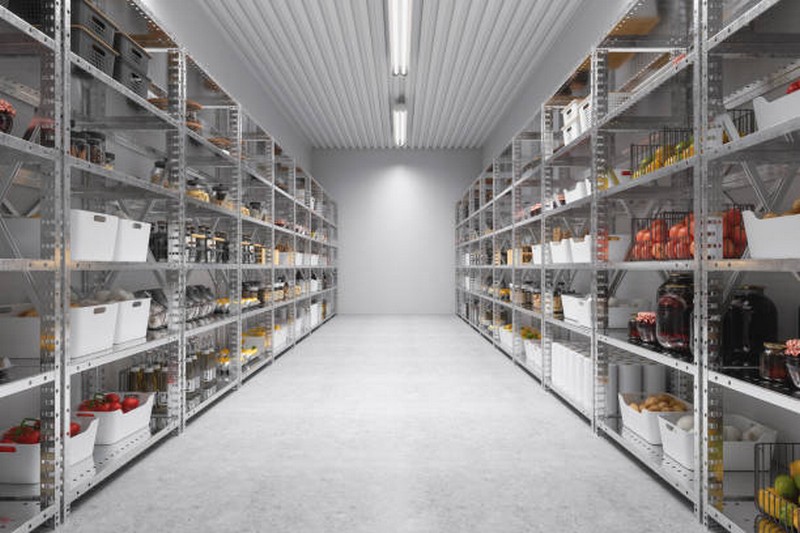Efficient cold room storage entails not only maintaining the appropriate temperature, but also optimizing space, arranging products, and guaranteeing quick access to stored objects. The backbone of reaching these goals is picking the appropriate shelf solutions.
We’d like to provide some insights and ideas to assist you select the ideal system that improves functionality, safety, and efficiency in your cold storage areas.
Understanding the Importance of Shelving in Cold Rooms
Shelving systems play a critical role in cold room operations. Beyond mere storage, the right shelving solution can:
- Maximize Space Utilization: By optimizing vertical space and organizing products effectively.
- Improve Inventory Management: Facilitating easy access and visibility, which aids in stock control and reduces waste.
- Enhance Operational Efficiency: Streamlining the retrieval process and saving time for staff.
- Promote Air Circulation: Crucial for maintaining uniform temperature throughout the cold room.
Types of Cold Room Shelving Solutions
- Adjustable Shelving: Offers flexibility in shelf height, making it adaptable to various product sizes. This versatility is key in environments where stock items frequently change.
- Modular Shelving: Consists of interchangeable parts that can be easily expanded or reconfigured. Modular systems are ideal for growing businesses or cold rooms with evolving storage needs.
- Mobile Shelving: Mounted on casters, mobile shelves can be moved around for cleaning or reorganized to optimize space. They’re particularly useful in maximizing storage density.
- Static Shelving: Fixed position shelving is sturdy and reliable, suitable for storing heavy items. It’s a go-to for products that don’t require frequent access.
- Wire Shelving: Promotes air flow around stored items, helping to maintain consistent temperatures and reduce the risk of spoilage. Wire shelving is also lightweight and easy to clean.
- Polymer Shelving: Made from durable, non-corrosive materials, polymer shelving is resistant to cold temperatures and moisture, making it a hygienic option for food storage.
Choosing the Right Shelving for Your Cold Room
When selecting shelving for a cold room, consider the following factors:
- Material: Look for materials that withstand cold temperatures and moisture without corroding or deteriorating. Stainless steel and heavy-duty plastics are excellent choices.
- Load Capacity: Ensure the shelving can support the weight of your products without sagging or collapsing.
- Compatibility with Cold Room Conditions: Some materials perform better in cold environments than others. Avoid materials that could crack or weaken at low temperatures.
- Ease of Cleaning: Hygiene is paramount in cold storage, especially for food. Choose shelving that is easy to disassemble and clean.
- Ventilation: Adequate air flow around stored items is crucial. Opt for shelving designs that facilitate good ventilation to help maintain uniform temperatures.
Installation Tips and Best Practices
- Utilize Vertical Space: Maximize storage by choosing tall shelving units that make use of the cold room’s height.
- Allow for Circulation: Position shelves away from walls and in a layout that promotes air flow, ensuring that cold air reaches all areas evenly.
- Accessibility: Arrange frequently used items at arm’s reach and organize products logically to minimize the time the cold room door is open.
- Safety First: Secure shelving units to the floor or walls to prevent tipping, especially in areas prone to movement or seismic activity.
Maintaining Your Cold Room Shelving
Regular maintenance is key to extending the life of your shelving and ensuring it remains safe and efficient:
- Regular Cleaning: Schedule routine cleanings to prevent the buildup of ice, dust, and debris, which can impede air flow and harbor bacteria.
- Inspections: Periodically check for signs of wear, damage, or corrosion. Promptly replace or repair parts as necessary.
- Reassessment of Needs: As your business grows or changes, reassess your shelving needs and adjust your setup accordingly.
Innovations in Shelving Solutions
The evolution of cold room shelving continues with advances in materials and design:
- Antimicrobial Coatings: Some modern shelving comes with antimicrobial coatings to resist bacteria and mold growth, enhancing food safety.
- Smart Shelving: Emerging technologies include shelving with built-in sensors to monitor temperature and humidity levels at the shelf level, providing real-time data for better inventory management.
Choosing the correct shelf system for your cold room is a strategic choice that affects all aspects of your business, from efficiency and safety to product integrity and energy usage. You can create an orderly, efficient, and safe environment that supports your business’s performance by taking into account your cold storage’s individual demands and the diversity of shelving alternatives available. Remember, the finest shelf system is one that adapts to your changing demands, can resist the hard conditions of cold storage, and adds to a well-managed cold room.

